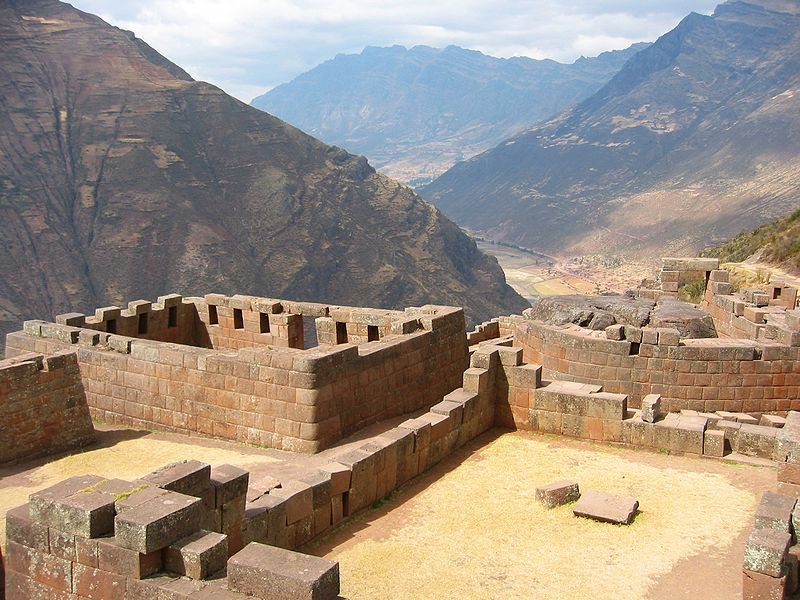Beautiful Ancient City Of Pisac In The Sacred Valley, Peru – Incredible Inca Ruins
Ellen Lloyd - AncientPages.com - Ancient city of Pisac in the Sacred Valley, Peru is not as famous as Machu Picchu, but it’s a remarkable place that is not only beautiful but also rich in history and legend.
Known for its Incan ruins, the city of Pisac, located about 19 miles northeast of Cusco lies atop a hill at the entrance to the valley. The view is fantastic and it seems that no matter where you stand, you can admire remarkable agriculture terraces that are still in use today.
It is said that in ancient times, the city was guarded at night by pumas.

Wonderful view over the agricultural terraces in the ancient city of Pisac, Peru. Image credit: Touropia
Why Did Inca Build The City Of Pisac?
Why Pisac was built is not entirely clear. According to the scholar Kim MacQuarrie, Pachacuti erected a number of royal estates to memorialize victories over other ethnic groups. Among these royal estates are Písac (victory over the Cuyos), Ollantaytambo (victory over the Tambos), and Machu Picchu (conquest of the Vilcabamba Valley).
However, there are also other historians who suggest Písac was established to protect Cusco from possible attacks from the outside.
The ruins are separated along the ridge into four groups known as P'isaqa, Inti Watana, Qalla Q'asa, and Kinchiraqay. In Quechua, Pisac means “partridge”. Inca tradition dictated building cities in the shape of birds and animals, and as such, Pisac is partridge shaped.
Partridge-shaped structures are related to the spirituality and values that the Incas believed that each human being should develop.
There are twenty lookout towers of different sizes placed strategically throughout the ruins. Some are massive watchtowers that are placed so that messages could be shouted from one to the other, and there are other towers that were used to store water for the elaborate irrigation system. The ruins in Pisac contain a group of thirty independent but uniform enclosures, which were probably used as apartments.
Legend Of Princes Inkill Chumpi And The Stone Figure
There are several ancient legends about this beautiful place in the Andean Mountains. One legend tells that a princess called Inkill Chumpi (princess of the Florida belt) owned the entire city. She would marry someone who could build a bridge over the Wilkamayu River (Vilcanota) in a single day.
After learning about this, many young men tried to accomplish what seemed like an impossible task. Asto Rimac, who was a secret lover of the princess owned the lands to the east. When Asto Rimac was started building the bridge, Princess Inkill Chumpi went to invoke the Apus (mountain spirits) to help him.
The spirits agreed to help him, but only if she didn’t look at the bridge until it was ready. Just before the bridge was finished, the princess began to hear loud thunders and gave in to the temptation to see what happened and turn to observe; At that moment, the Urubamba river swallowed Asto Rimac, and she was turned to stone, standing, looking towards the valley of Pisac. In the place until today can be seen as the figure of stone.

Temple of the Sun in Pisac. Image source
It is unknown when Inca Písac was built. There are no traces suggesting that Picas was inhabited by any pre-Inca civilization, so it was most likely built no earlier than 1440.
Francisco Pizarro and the Spanish conquerors destroyed Inca Písac in the early 1530s. The modern town of Písac was built in the valley by Viceroy Toledo during the 1570s.
Written by Ellen Lloyd – AncientPages.com
Copyright © AncientPages.com All rights reserved. This material may not be published, broadcast, rewritten or redistributed in whole or part without the express written permission of AncientPages.com
Expand for referencesMore From Ancient Pages
-
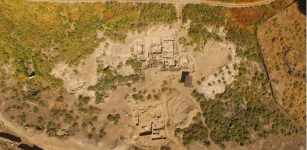 3,000-Year-Old Bakery With Large Amounts Of Flour Discovered In Armenia
Archaeology | Jul 3, 2023
3,000-Year-Old Bakery With Large Amounts Of Flour Discovered In Armenia
Archaeology | Jul 3, 2023 -
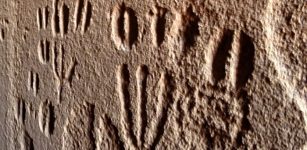 Animal Tracks And Human Footprints In Prehistoric Hunter-Gatherer Rock Art In Namibia
Archaeology | Sep 13, 2023
Animal Tracks And Human Footprints In Prehistoric Hunter-Gatherer Rock Art In Namibia
Archaeology | Sep 13, 2023 -
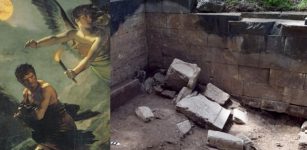 Temple Dedicated To Goddess Nemesis Discovered Under Ancient Theater In Greece
Archaeology | May 20, 2019
Temple Dedicated To Goddess Nemesis Discovered Under Ancient Theater In Greece
Archaeology | May 20, 2019 -
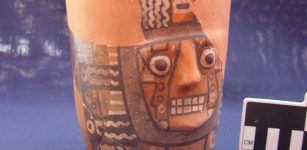 Ancient Pottery Reveal How Peru’s First Great Empire Wari Functioned
Archaeology | Mar 14, 2023
Ancient Pottery Reveal How Peru’s First Great Empire Wari Functioned
Archaeology | Mar 14, 2023 -
 How Did Norman Conquest Of 1066 Affect Everyday People’s Eating Habits?
Archaeology | Jul 7, 2020
How Did Norman Conquest Of 1066 Affect Everyday People’s Eating Habits?
Archaeology | Jul 7, 2020 -
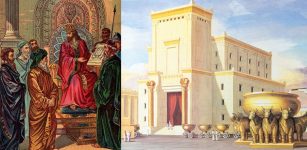 Mystery Of King Solomon’s Temple
Biblical Mysteries | Dec 3, 2018
Mystery Of King Solomon’s Temple
Biblical Mysteries | Dec 3, 2018 -
 Why Do Some Men Think Often About The Roman Empire?
News | Oct 4, 2023
Why Do Some Men Think Often About The Roman Empire?
News | Oct 4, 2023 -
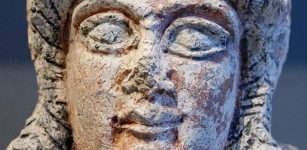 Ancient Mesopotamian City Discovered And Identified As Xarab-i Kilashin
Archaeology | Jul 11, 2017
Ancient Mesopotamian City Discovered And Identified As Xarab-i Kilashin
Archaeology | Jul 11, 2017 -
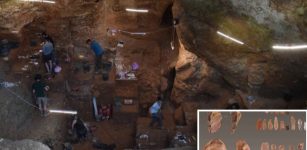 Stone Tools In Lapa do Picareiro Cave Reveal Modern Humans Reached Western Parts Of Europe 5,000 Years Earlier Than Previously Thought
Archaeology | Sep 30, 2020
Stone Tools In Lapa do Picareiro Cave Reveal Modern Humans Reached Western Parts Of Europe 5,000 Years Earlier Than Previously Thought
Archaeology | Sep 30, 2020 -
 Silver Needle Dismissed As Trash Was Part Of A Stunning Viking Treasure Found By Farmer On Gotland
Archaeology | Nov 17, 2020
Silver Needle Dismissed As Trash Was Part Of A Stunning Viking Treasure Found By Farmer On Gotland
Archaeology | Nov 17, 2020 -
 Unusual 6,000-Year-Old Gold Objects Discovered In Hungarian Tombs – More Mysterious Conical Hats?
Archaeology | Mar 25, 2021
Unusual 6,000-Year-Old Gold Objects Discovered In Hungarian Tombs – More Mysterious Conical Hats?
Archaeology | Mar 25, 2021 -
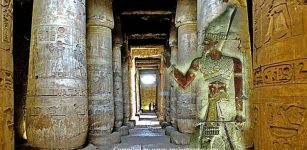 Abydos: One Of The Most Important Cities Of Ancient Egypt
Featured Stories | Jul 15, 2016
Abydos: One Of The Most Important Cities Of Ancient Egypt
Featured Stories | Jul 15, 2016 -
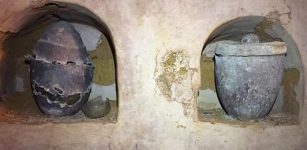 Composition Of A 2,000-Year-Old Roman Perfume Identified For The First Time
Archaeology | May 26, 2023
Composition Of A 2,000-Year-Old Roman Perfume Identified For The First Time
Archaeology | May 26, 2023 -
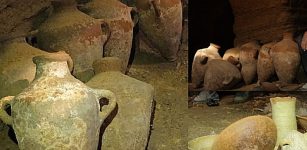 Man-Made Square Burial Cave Dated To Rameses II-Era Accidentally Found In Israel
Archaeology | Sep 19, 2022
Man-Made Square Burial Cave Dated To Rameses II-Era Accidentally Found In Israel
Archaeology | Sep 19, 2022 -
 Living Descendant Of Legendary Native American Leader Sitting Bull Confirmed Using DNA From Hair
Archaeology | Oct 27, 2021
Living Descendant Of Legendary Native American Leader Sitting Bull Confirmed Using DNA From Hair
Archaeology | Oct 27, 2021 -
 Constructing Noah’s Ark – Re-Examination Of The Original Biblical Wording
Biblical Mysteries | Feb 1, 2018
Constructing Noah’s Ark – Re-Examination Of The Original Biblical Wording
Biblical Mysteries | Feb 1, 2018 -
 Mysterious High-Energy Particles Detected In Antarctica – Evidence Of Ancient Nuclear Technology Or Something More Frightening?
Featured Stories | Sep 11, 2019
Mysterious High-Energy Particles Detected In Antarctica – Evidence Of Ancient Nuclear Technology Or Something More Frightening?
Featured Stories | Sep 11, 2019 -
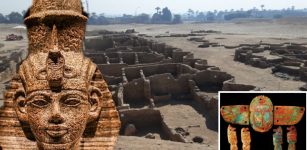 Lost Golden City Of Pharaoh Amenhotep III Discovered In Luxor
Archaeology | Apr 9, 2021
Lost Golden City Of Pharaoh Amenhotep III Discovered In Luxor
Archaeology | Apr 9, 2021 -
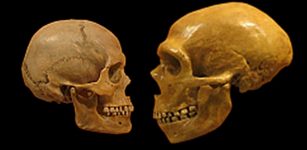 Neanderthals Had Capacity To Speak And Understand Language Like Humans
Archaeology | Mar 2, 2021
Neanderthals Had Capacity To Speak And Understand Language Like Humans
Archaeology | Mar 2, 2021 -
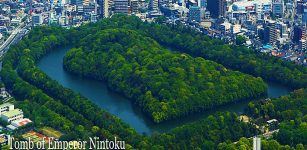 Kofun: Megalithic Keyhole-Shaped Tombs That Belonged To High Status People In Japan
Civilizations | Oct 31, 2018
Kofun: Megalithic Keyhole-Shaped Tombs That Belonged To High Status People In Japan
Civilizations | Oct 31, 2018


